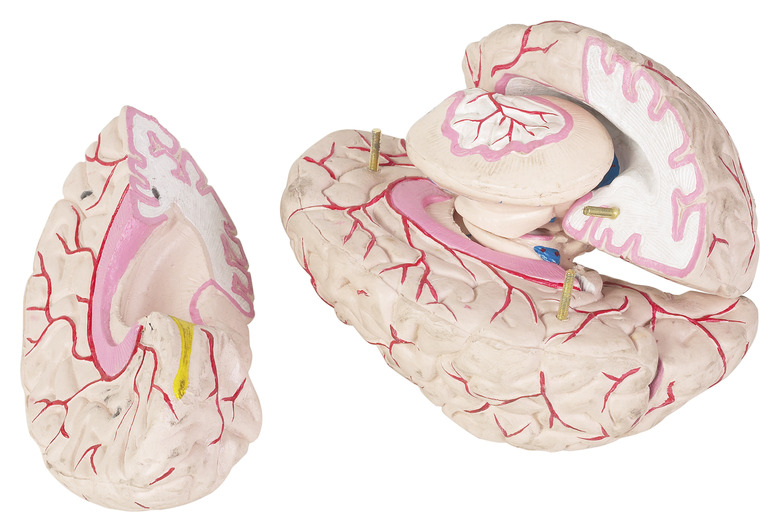Types Of Nerves In The Human Body
The nervous system is nature's way of sending instructions from one part of the body to another. Signals that begin in the central nervous system (usually the brain but sometimes the spinal cord) move toward the periphery to locations such as the limbs or internal organs, and direct the target to do something. In response to nerve impulses, a bicep muscle may contract, the hairs on your legs may stand on end or activity in your intestines may increase.
Nerves function by transmitting electrochemical impulses they receive from the brain or other nerves to nerves "downstream" or to the cells, organs or tissues at which these nerves terminate. Types of nerves may be established based on their anatomical location, which the names of nerves in the body typically reflect (e.g., "leg nerves"). It is conventional, however, to describe nerve types on the basis of their function: motor, sensory, autonomic or cranial.
Motor Nerves
Motor Nerves
Motor nerves, or motor neurons (also called motoneurons) send impulses from the brain and spinal cord the the muscles all throughout the body. This allows people to do everything from walking and talking to blinking their eyes. Motor nerve damage can lead to weakness in the muscle or muscles supplied and atrophy (shrinking) of those muscles as well. The sciatic nerve that runs from the lower back through the buttocks to serve the entire leg is actually a bundle of many different nerves, some of them motor neurons serving the thigh, hamstring, calves and feet.
Sensory Nerves
Sensory Nerves
Sensory nerves (sensory neurons) send impulses in the opposite direction from motor neurons. They collect information about pain, pressure, temperature and so on from sensors in the skin, muscles and internal organs and send it back to the spinal cord and the brain. Sensory nerves are even capable of relaying information about motion (apart from what the eyes themselves do). Sensory nerve damage may cause tingling, numbness, pain and oversensitivity.
Autonomic Nerves
Autonomic Nerves
The autonomic nervous system regulates the activity of heart muscle, smooth muscle like that in the stomach and the lining of other organs, and glands. These nerves control functions not under conscious control (think "automatic" instead of "autonomic"). The autonomic nervous system includes two functional divisions: the sympathetic nervous system, involved in speeding up heart rate and other "fight or flight" responses; and the parasympathetic nervous system, which regulates digestion, excretion and other metabolic activities.
Cranial Nerves
Cranial Nerves
Twelve pairs of cranial nerves originate at the underside of the brain. In order from front to back these are the olfactory, optic, oculomotor, trochlear, trigeminal, abducens, facial, vestibulocochlear, glossopharyngeal, vagus, spinal accessory and hypoglossal nerves. These are essential in vision, smell, eye and facial movements, salivation and tongue movements.
This list of nerves is made easier to remember using a mnemonic that captures the first letter of all 12 nerves, like this one:
On Old Olympus Towering Top A Famous Vocal German Viewed Some Hops.
Cite This Article
MLA
Beck, Kevin. "Types Of Nerves In The Human Body" sciencing.com, https://www.sciencing.com/types-nerves-human-body-7869240/. 30 July 2018.
APA
Beck, Kevin. (2018, July 30). Types Of Nerves In The Human Body. sciencing.com. Retrieved from https://www.sciencing.com/types-nerves-human-body-7869240/
Chicago
Beck, Kevin. Types Of Nerves In The Human Body last modified March 24, 2022. https://www.sciencing.com/types-nerves-human-body-7869240/
